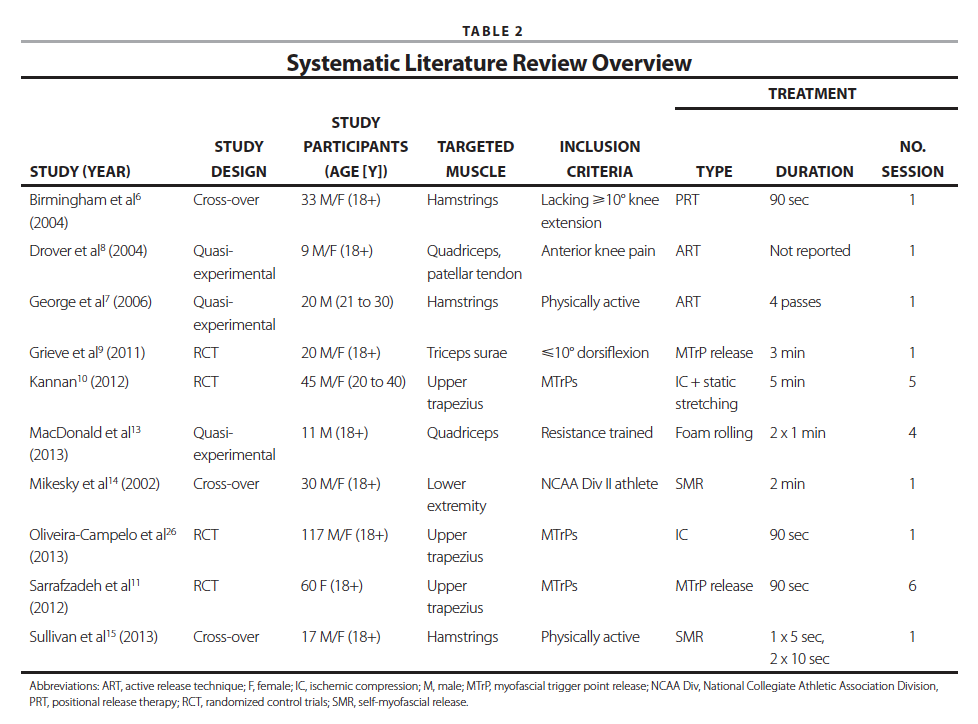How Effective is Myofascial Release — A Summary
How Effective is Myofascial Release — A Summary
A number of soft-tissue manual therapies have been developed to address fascial restrictions and myofascial trigger points to restore normal range of motion (ROM) and muscular function. Over the past several years, there has been an increasing body of research investigating the effectiveness of these techniques for improving range of motion, muscle activation, and muscle force production. To synthesize this literature, researchers at the Sports Medicine Research Laboratory at the University of North Carolina at Chapel Hill conducted a systematic literature review of the current body of research in this area.
The initial literature search resulted in 873 articles for review. Duplicate articles were removed, and 497 titles and abstracts were reviewed. Review of the 497 titles and abstracts resulted in 477 articles being excluded. Six additional articles were excluded following full-text review. The reference list of each remaining article was reviewed, and an additional three articles were identified. In total, 10 articles were included in the current review. (For a full list, see the diagram below.)
Range of Motion
Nine articles examined the effects of the previously mentioned therapies on ROM; four focused on hamstring flexibility, one focused on quadriceps flexibility, one focused on triceps surae flexibility, and three focused on cervical neck flexibility. A ll but two studies observed a statistically significant increase in range of motion for at least one measurement following treatment.
Muscular Activation
Three articles examined the effects of the mentioned therapies on muscular activation levels; two focused on the quadriceps, and one focused on the hamstrings. No study reported statistically significant differences between pre- and post-treatment measurements for any variable measuring muscular activation.
Muscular Force Production
Three articles examined the effects of the mentioned therapies on muscular force production; two focused on the quadriceps, and one focused on the hamstrings. No study reported statistically significant differences between pre- and post-treatment measurements for any measure of force or rate of force development.
The findings indicate that myofascial release therapies are effective in restoring and increasing range of motion without having a detrimental effect on muscular activity or performance. Gains in ROM allow for more efficient movement patterns and ultimately result in better performance and decreased risk of musculoskeletal injury. These gains in ROM were observed with as little as 20 seconds of treatment, but more commonly with one and a half to three minutes of treatment.

NASM
Be the first to post a message!
